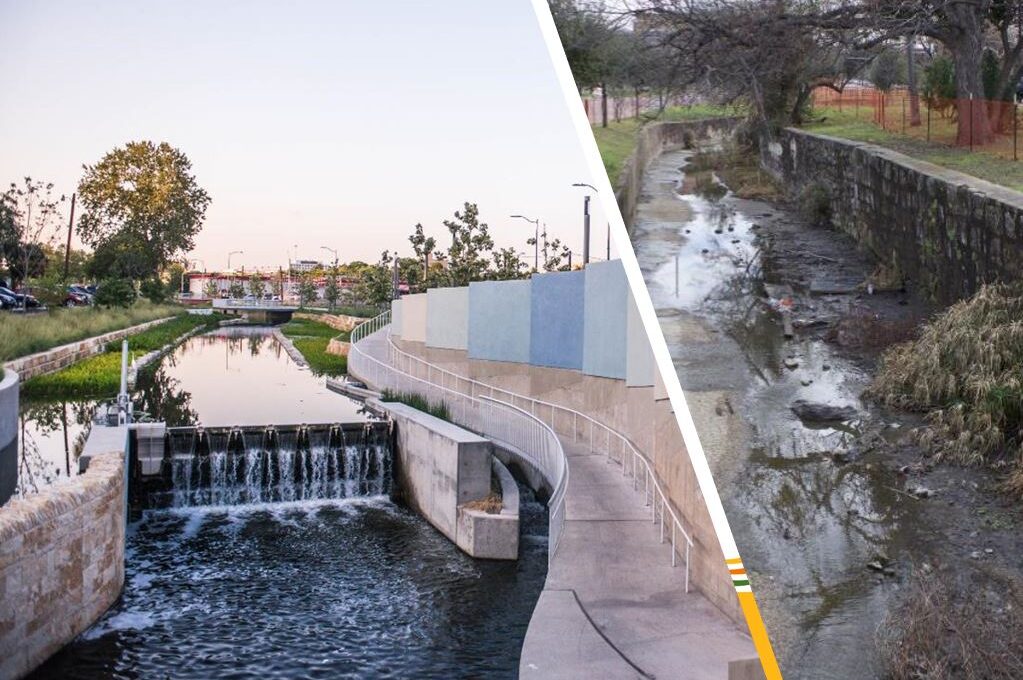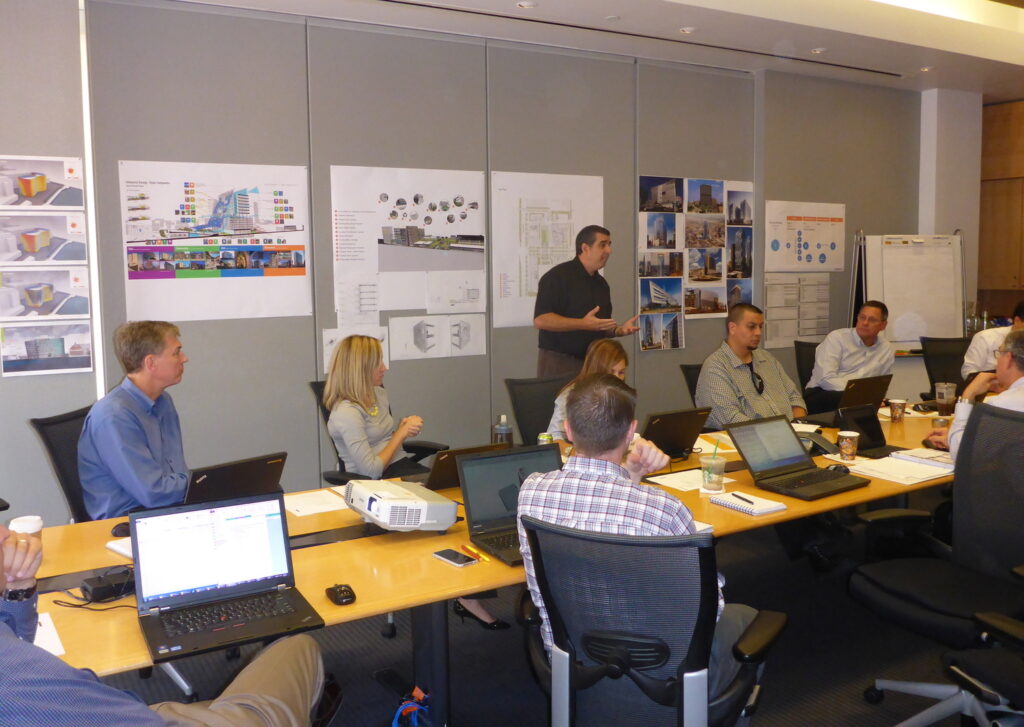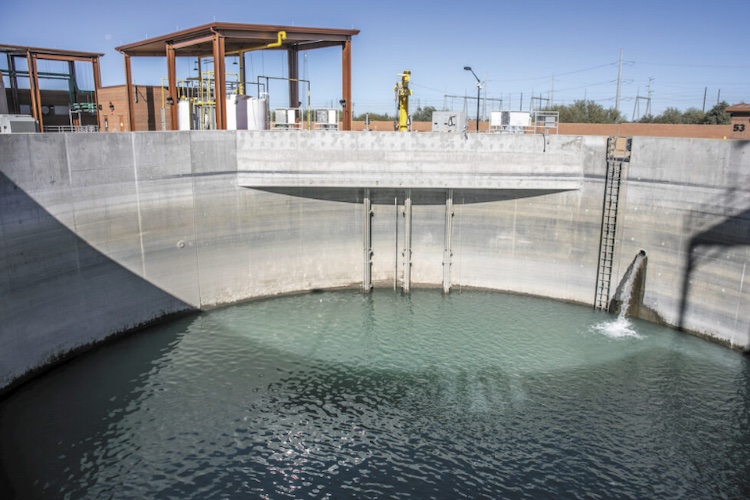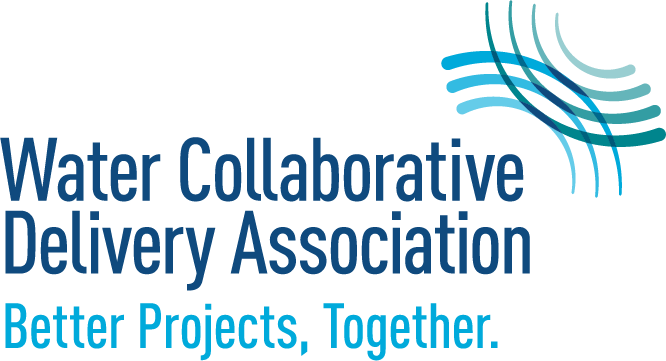People generally don’t like change. Several reasons exist for this, but mainly from a fear of the unknown. When people do leave their comfort zone, however, it can be liberating to achieve results far better than what they have seen in the past. In horizontal construction, design-bid-build or “hard bid” delivery is a heavily favored status quo generally for public owners and civil contractors alike. Other methods like design-build and construction management at-risk (CMAR) offer proven advantages, such as earlier knowledge of costs, a collaborative approach, fewer change orders, innovation, and faster project delivery. Yet, for all of their success in all construction sectors, these alternatives are still slow to catch on in some regions in civil construction.
At the San Pedro Creek Culture Park project in San Antonio, we implemented a formal scoping and partnering session for a more integrated approach with the owner and design team. Via phased guaranteed maximum prices (GMPs), the team saved the client $9.7 million for Segment 1.1. The CMAR project transformed a concrete drainage ditch (right) into a world-class linear park (left).

Having worked in this industry for four decades, I can say with confidence that it’s never too late to adopt a different way of doing things that improves the way we deliver infrastructure to our communities. It just takes a willingness to educate yourself and the people in your organization. You may be faced with a lack of trust or knowledge in this area, or a bad past experience, or a culture or political environment that resists change. If these are affecting your decision-making on collaborative project delivery methods, consider these steps:
1. Unlearn the low-bid, low-trust mentality.
So many business innovations, including within construction, focus on breaking down silos—silos of data, knowledge, skills, or resources. Taking a closer look at design-bid-build, it is a highly siloed process. An owner and architect/engineer can spend two or three years designing a project. Then, when it goes out to bid, contractors have a month to essentially become experts on it, plan how to execute it, and put forth their lowest price possible to win the project. Disputes over gray areas, problems with the plans, and unconstructible elements are all bound to occur, and they do.
This is why a lack of trust exists between owners and contractors. For decades, we’ve operated with a “low-bid mentality.” To be low on bid day, a contractor has to interpret the plans to do the minimum—not the maximum—to be successful. Project after project with this mindset, contractors create a culture of looking out for themselves first, and this erodes trust. Some would blame the builder. I would argue it’s the delivery method.

As the first horizontal progressive design-build in Arizona, the 2.5-mile-long Skyline Drive widening project in Tucson was designed and built in 19 months, and included all right-of-way acquisitions and easements, environmental permits, and public art features. It was the first public project in Arizona to include all of these services. Value engineering amounted to $2.8 million in savings.
“There is a tendency to try to cut costs on up-front work in an effort to get the project done faster and cheaper. But preplanning is key to getting off to a good start. Sometimes slower and more expensive at the onset can mean faster and cheaper in the long run.”
Hans Van Winkle, former Director of the Construction Industry Institute and Deputy Commanding General of the US Army Corps of Engineers
2. Develop a culture—and framework—that promotes collaboration.
This brings up the question: What would it take for a contractor to change its business model, or for a state, county, or city to adopt new laws? Change happens when leaders realize the value of collaboration and the trust that comes with it. When these individuals grasp the benefits of collaborative delivery methods, and they’re able to demonstrate the added value to their people, a shift in paradigm begins to take place.
For the owner, collaborative delivery methods offer more transparency and certainty from day one. Project risks are better understood, defined, and shared, and the owner maintains more control over the design and contingencies under the CMAR and progressive design-build (PDB) delivery methods. For the contractor, there is more time and opportunity to plan the job, collaborate with stakeholders, and allocate resources. In addition to these benefits, collaborative delivery allows for issues to be solved on paper before they become problems during construction, delivering more predictable results for the owner and the community. When issues do occur, there’s a shared responsibility to find solutions that are in the project’s best interest.
A design meeting for the renovation of the CPS Energy Headquarters building in San Antonio, a 490,000-square-foot, $150 million CMAR project completed in 2020. From the start, Sundt worked closely with the owner and designer to offer accurate forecasting for project costs, providing detailed estimating and budgets.

Methods like CMAR and PDB offer intangible benefits as well. Team members at all levels of an organization benefit from working with others from different backgrounds and disciplines. They’re exposed to new ways of thinking and problem-solving, and they grow as people. Also, as young people consider construction as their career field, there is an increased desire to work within a team environment—or at least less of a desire to go to work battling over issues every day versus solving them.
For a culture of collaboration to exist on a project, it also needs the proper legal framework. Laws surrounding collaborative delivery vary widely from state to state. The public owners who get the most from collaborative delivery methods are those whose statutes and contracts do not promote gamesmanship. For example, when a client competes preconstruction and other fees, it hinders a contractor’s ability to provide the services required or intended by the contract and promotes unnecessary risk shifting. On Sundt projects, our studies show that for every dollar a client spends in preconstruction, we return $10 in value engineering savings for the construction scope. In essence, you get what you pay for.
3. Find trusted partners who have experience in collaborative delivery.
Neither of the previous steps matter if your contractor doesn’t understand how collaborative delivery methods work. Cross-market experience, familiarity with design-build, CMAR, and public-private partnerships (P3s), and a collaborative culture can illustrate an industry leader in this area.

At the Signal Butte Water Treatment Plant project in Mesa, Arizona, Sundt worked closely with the City and design team early on. Our CMAR team was able to start up and commission the plant to deliver water six months ahead of the scheduled delivery date. The team also identified over $18 million in value engineering items that led to $9 million in project savings.
It all starts with education, for our own people, our clients, and the design consultants. We recognize that there is a certain nontechnical skill set needed to master collaborative delivery methods, which we develop through both industry organizations and in-house training and leadership programs. On the client side, we are proud to have served as the contractor of choice for multiple public owners’ first collaborative delivery projects, as well as industry consultants and advocates in several markets. Our goal is to serve as a trusted partner and build better projects.
